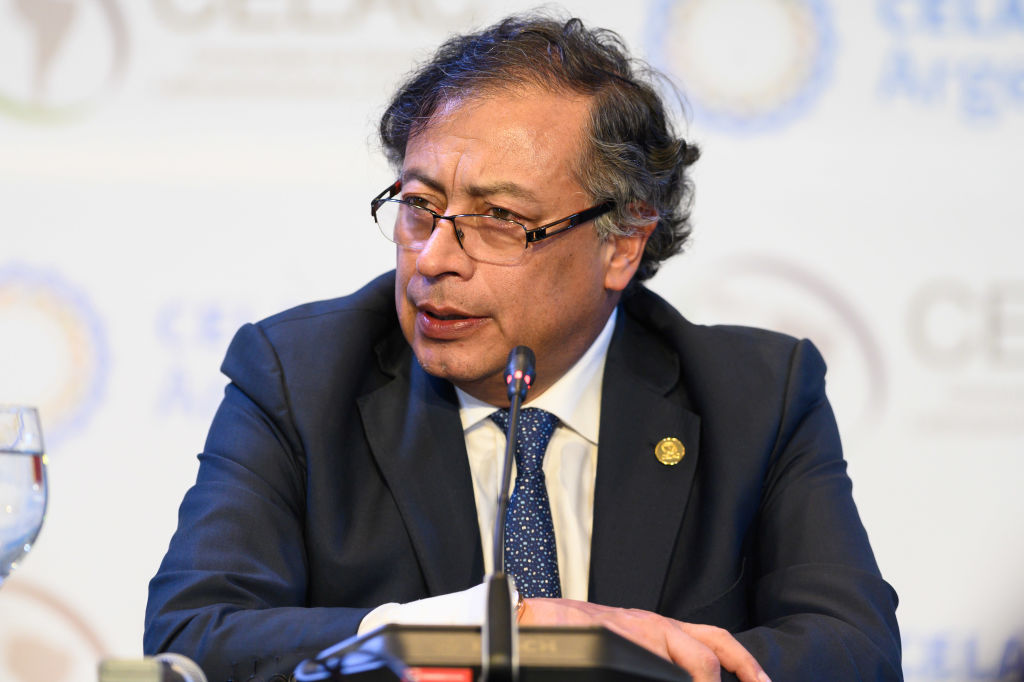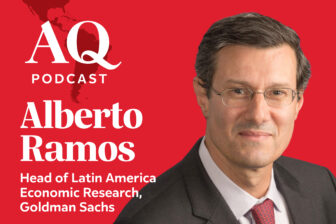BOGOTÁ — President Gustavo Petro and his coalition are gearing up for a pivotal year. They hope to pass major pension, labor market and healthcare reforms and deliver on a range of other campaign promises. But their efforts will be complicated by an economy that is set to slow dramatically in 2023.
With the economic picture darkening, the success or failure of their plans may depend on two key questions: whether the government is able to deliver stronger economic growth, and whether reform proposals are moderated.
In the wake of the pandemic, Colombia’s economy grew 10.7% in 2021 and then 8% in 2022, more than double Latin America’s average rate of 3.6%. This remarkable growth can be attributed to three main dynamics, two of which will no longer be present in 2023. First, Colombia experienced an extraordinary positive shock in its terms of trade; the relative price of its exports grew 67% compared to the second quarter of 2020. Meanwhile, the average rise in the terms of trade for the region was just 6%. Colombia did so well in part because 55% of its exports are derived from oil and carbon, which had extremely favorable prices throughout 2022. In short, higher commodity prices generated a windfall that translated into higher economic activity.
Second, monetary policy was expansive for longer compared to other parts of the region. Despite inflationary pressures, Colombia’s central bank didn’t begin to raise rates until October 2021, when most other central banks in the region had already raised rates several times. Naturally, this more expansive monetary policy implied a stimulus for aggregate demand and economic growth.
Lastly, in 2022 Colombia completed three consecutive years with a fiscal deficit higher than 7% of gross domestic product (GDP). (This includes the deficit from the gas prices stabilization fund.) In fact, in 2022, Colombia’s deficit was still 3% of GDP higher than before the pandemic. In contrast, the largest economies of the region had unwound their fiscal stimulus by 2022, returning to deficit levels comparable to those of 2019. This high fiscal deficit implied another stimulus for aggregate demand and economic growth.
An expected—but unfortunate—consequence of huge stimulus that increases demand is that supply typically reacts at a slower pace. This means that excess demand puts undue upward pressure on prices. Indeed, Colombia closed 2022 with an inflation rate of 13.1% that shows no signs of abating. In January 2023, inflation rose for the eighth consecutive month to 13.3%, with core inflation (excluding energy and food) reaching 9.7%. In most economies of the region, inflation peaked in the second half of 2022, but in Colombia the peak is still nowhere to be seen.
What to expect in 2023
Colombia’s central bank transitioned to a more restrictive monetary policy in the second half of 2022, closing the year with interest rates at 12%. Meanwhile, the government has announced a reduction of its fiscal deficit of 3% of GDP, which will lead a to slightly positive primary surplus (not including interest payments) of about 0.1% of GDP. These changes to monetary and fiscal policy together imply a large but necessary adjustment in aggregate demand. Under these conditions, and with an expectation of lower—though still high—terms of trade, we estimate that the economy will grow only 1.5% this year.
Although the inflation scenario in 2023 is better than last year, the upward trend has raised inflation expectations for this year to 8%, well above the 4% roof of the central bank’s target. These inflation expectations may increase further if the 16% rise in the minimum wage—announced in December—increases the prices of goods and services through its impact on labor costs. This dynamic probably played into in the evolution of last year’s inflation as well.
In terms of unemployment, the labor market experienced an important post-pandemic rebound. The unemployment rate rose from 10.9% in 2019 to 16.7% in 2020, but then fell to 11.2% in 2022. Still, the structural problems affecting Colombia’s labor market require much-needed reform. Given the low growth rate we expect for 2023, the unemployment rate will probably remain around 11% this year. The combination of high inflation and low employment growth implies that poverty rates could increase in 2023, which would present a major challenge for Petro.
The national development plan
The Petro administration recently presented its national development plan, outlining policy priorities, primary targets, and the sources for funding the projects associated with those objectives. The plan, which should become law before May, reflects most of what Petro discussed during his campaign, particularly his emphasis on protecting Colombia’s rich biodiversity and environmental assets, as well as accelerating the energy transition by rapidly decarbonizing the economy.
However, the plan does not address Petro’s promises to forbid new contracts for exploration in the mining and oil sectors, which in the last decade accounted for 33% of total foreign direct investment and 58% of total exports. The Petro administration is betting that this main source of foreign exchange can be effectively replaced in the short term with tourism and agriculture, but this seems highly unlikely. A more gradual transition is needed.
The plan also lacks ambition in its economic growth goals. The government estimates a growth rate of just 2.8% in 4 years, whereas Colombia’s average rate this century has been 3.9%. Economic growth drives employment, the principal source of income for most households, and is key to the government’s goal of reducing poverty. The plan should include a higher target for economic growth, alongside detailed strategies on how to achieve higher potential output growth—ideally through higher infrastructure investment and better quality of education.
Structural reforms and political capital
In parallel to the national development plan, the government will also propose reforms to address structural problems on at least three fronts: pensions, the labor market and healthcare. While changes in these areas are necessary, some of the details of the reforms have proven controversial. The healthcare reform has been particularly divisive and faces opposition even from members of the Cabinet as well as Senate President Roy Barreras, a prominent member of Petro’s coalition.
With an important political coalition and the confidence of a mandate for change, Petro has called for citizens to march in the streets in support of the reforms. Although this will put some pressure on legislators, there seems to be more support for the pension and labor market reforms than the healthcare reform, especially given the prospect of local elections in October.
It is possible that the Petro administration will build consensus and moderate its proposals. This may lead Congress to pass most of the proposed reforms, showing that demands for change have been successfully channeled through representative democracy. It is also possible that the administration will be less pragmatic, insisting on the divisive elements in its proposals. This may lead Congress to block the reforms and create another round of political polarization. Only time will tell. Hopefully, social demands will be met with reasonable and gradual reforms that move Colombia toward a more equal, sustainable and prosperous society.
—
Mejía is the executive director of Fedesarrollo. He was deputy minister and minister of planning of Colombia from 2014-2018, leading the ministry in its implementation of the sustainable development goals agenda. He has also held positions as director for macroeconomic policy at Colombia’s ministry of finance, as well as researcher at Colombia’s central bank and the Inter-American Development Bank in Washington. Follow him on Twitter @LuisFerMejia.








